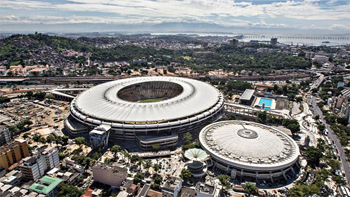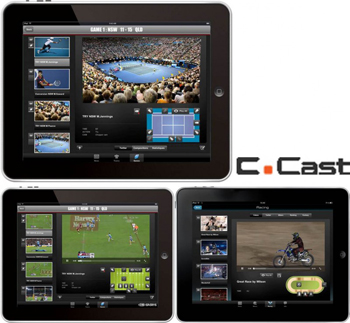2014 FIFA World Cup Set for Action
Now it's time for broadcast and production equipment suppliers to shine.
New York -- At next month's 2014 FIFA World Cup, 4K (UHDTV) will make a limited appearance, but all of the matches (roughly 1,000 hours more than the previous World Cup in South Africa) will be shot in HD with cameras, switchers, servers and other production technology from a wide variety of equipment manufacturers and streamed live or on-demand. The tournament in Brazil runs for a month, from June 12-July 13.
This year's "world's most watched" event will be the first ever 24/7 World Cup with 50 percent more TV coverage than in the 2010 FIFA World Cup, in South Africa. Also, all 64 matches will be made available on television sets, desktop computers and mobile devices in real-time.

The final match will be played at the Maracanã stadium and will be shot in full 4K (4096 pixels × 2160 lines) and distributed in UHDTV (3840 pixels × 2160 lines) resolution. Sony Corporation and FIFA will collaborate on several UHDTV initiatives during the tournament, including production of the official 2014 FIFA World Cup film (which includes a selection of games, including the final). The Official film is due to be distributed online by FIFA via 4K content distribution services after the 2014 FIFA World Cup.
In addition, three matches--one match from the round of 16 (to be held on 28 June), one quarter-final (on 4 July), and the final (on 13 July) at the Estadio Maracanã in Rio de Janeiro--will be captured in UHDTV and displayed on large TV screens set up at the various World Cup venues. The games will be captured with Sony PMW-F55 4K cameras in tandem with EVS 4K replay systems. Sony will also supply its 4K multi-port AV storage unit (PWS-4400), 4K LCD monitor (PVM-X300), and 4K multi-format switcher (MVS-7000X).
For its part, Panasonic Corp. has supplied a complete audio-visual communication system, including giant screen and monitors, at the Arena Pantanal stadium in Cuiaba, the capital of the state of Mato Grosso in the central-western region. The technology is said to be worth $3 million. The system was installation in December.
Nicolas Bourdon, Marketing & Communications Director at EVS, said there will be no OB vans parked outside the dozen venues spread across Brazil, but a series of flypacks that include EVS XT3 servers and all of the equipment necessary to produce a multi-camera telecast. Each flypack includes 16 EVS XT3 servers (with Multicam software for 4K).
Get the TV Tech Newsletter
The professional video industry's #1 source for news, trends and product and tech information. Sign up below.
In addition, over 100 EVS IPDirectors units will be used at the IBC in Rio for logging and content management; 50 IPBrowse stations will be used by the Host Broadcast Services (HBS) production team to access the FIFA Max central storage array (with a capacity of 5,500 hours of HD and low res proxies) and 75 stations will be used by licensees to access the FIFA Max; EVS Xedio Dispatcher will be sued by 43 ENG crews for rough cuts, logging and content management; EVS MultiReview software, to allow the staff to see multiple angles of the same play (giving them a full view of all camera sources while taking up only one of the channels on the EVS servers); an EVS XstoreSAN; as well as EVS C-Cast and C-Cast Xplore software
CCAST Explore is a Web-based interface that lets the staff review and import selected clips, create in and out points, and then import them locally using the EVS CCAST connected content platform.

C-Cast, from EVS, connects any on-site TV production infrastructure to a cloud-based platform to enable content owners to either aggregate content, enrich it or instantly deliver it to any platform. Other notable stats: 36 editors using Adobe Premiere will use EVS IPLink for quick and reliable access to nearline storage; six XT3 servers (with 2,200 hours of HD capacity) will be used for ingest of up to 28 feeds from venues; 83 IP web licenses will be used remotely by offsite broadcasters to access the FIFA Max storage system from their home bases.
On the digital media side, it's estimated that 50-100 million apps will be downloaded for potential global coverage of 2.7 billion. Akamai's cloud-based CDN will use HLS streaming (used by iOS devices) to support the numerous online services being set up by international broadcasters for World Cup coverage. In addition, current bandwidth in Brazil is 3-4 times as fast as that available for the 2010 World Cup. Verizon's Digital Media Services will also paly a large part of the vide streaming, live and on-demand from Brazil.
